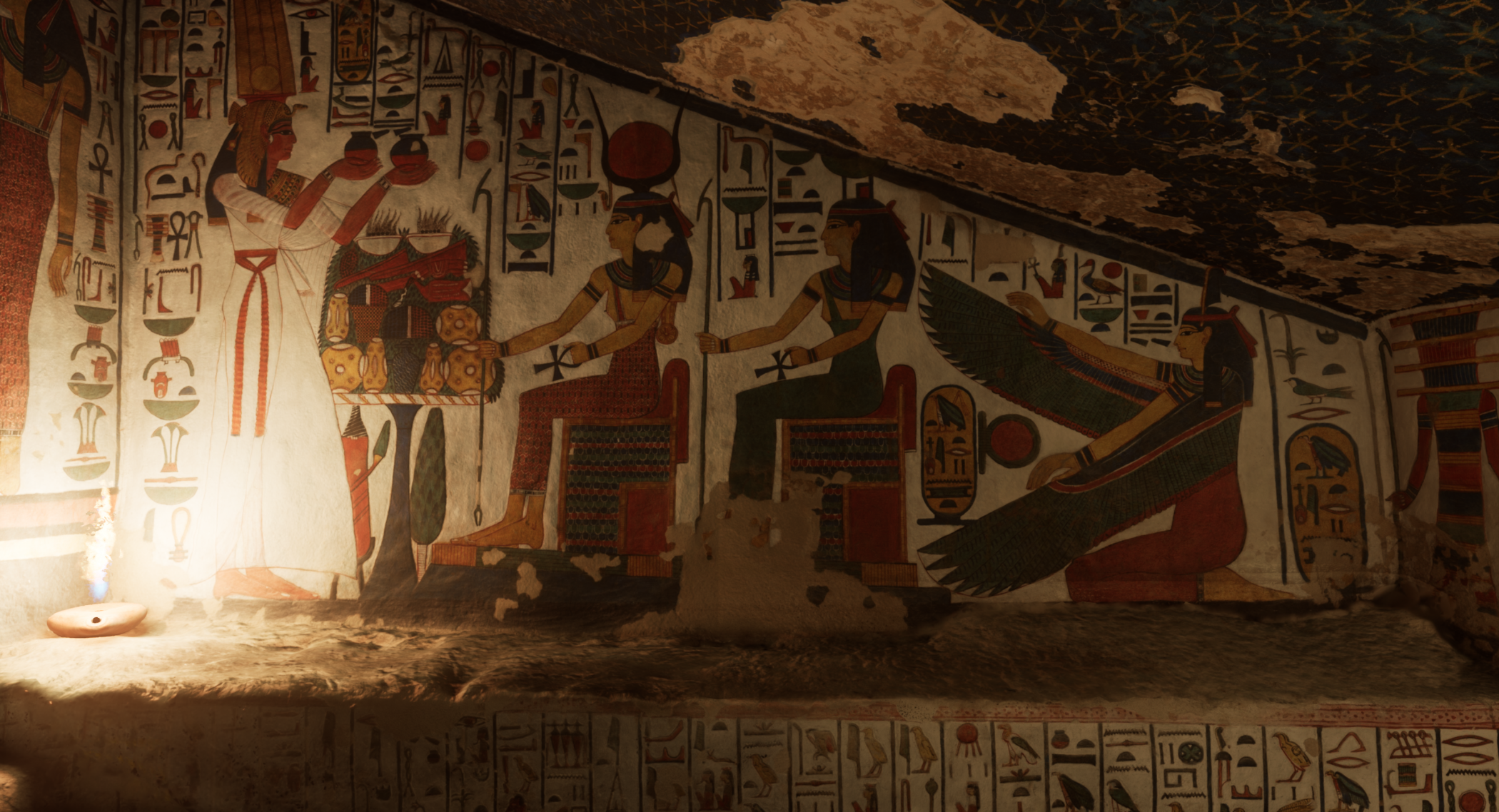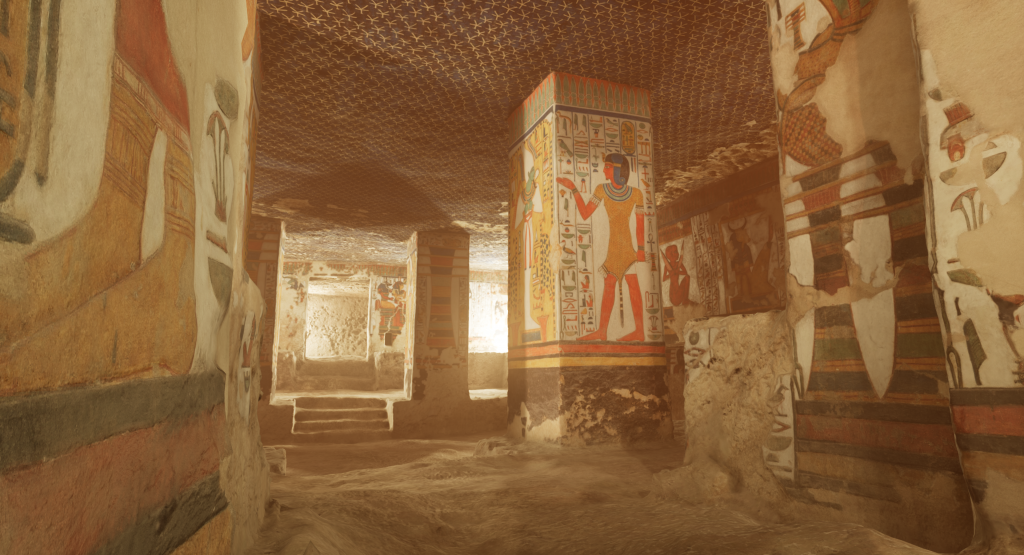
Queen Nefertari’s tomb is one of the most detailed and valuable sites in Egypt’s Valley of the Queens. It was discovered in 1904, but since the ‘50s, it has been variously closed to public access, restored, and/or completely sealed due to the rapid deterioration of the stunning paintings within. As of this month, however, the public will gain access to the tomb in a new medium. Nefertari: Journey to Eternity is a VR experience created by Experius VR and Reality Virtual and offered via the CuriosityStream network.
Background on Queen Nefertari
Queen Nefertari was the Great Wife of Pharaoh Ramesses II, (and reportedly, his favorite). Her tomb is known as the Sistine Chapel of Ancient Egypt because it is completely covered in detailed painting. A full 5,200 square feet of wall and ceiling were at one time covered in art. The tomb also once held Queen Nefertari’s sarcophagus along with her personal effects, but it has been heavily looted. Now, only two-thirds of the detailed walls and ceiling remain.
Still, what looters left in the tomb gives Egyptologists an intimate look into the life of Queen Nefertari and, more broadly, a window into the spiritual realm of Ancient Egyptians.
To get the images for Journey to Eternity, Director of Photography Simon Che de Boer of Reality Virtual gained limited access to the site. They employed advanced photogrammetry and scanning techniques to capture images without disturbing a spec of ancient royal dust.
The experience is currently available on Steam, Viveport, and the CuriosityStream network. It requires an HTC Vive VR headset or an equivalent to view.
VR in Education
There is no doubt that AR and VR have begun to fundamentally change the way that K-12 classrooms approach a wide range of subjects. “It gets you out of the textbook,” said John Zingale, who imaged artifacts with his class at Vancouver iTech Preparatory in Washington to create a virtual museum.
“Let’s say that we’re going to study the Coliseum and look at life in ancient Rome. You can only learn so much from a picture. When you put on that device, and you’re standing next to the coliseum and you get the full scale of it, things change.”
“When I do my unit with my sixth graders in world studies called Adaptation, [a unit on climate change], we do one module where we look at how climate change is affecting certain countries in the developing world. We actually visit the streets of Bangladesh. I pull it up on Google Street View, and we have the students stand in the streets. And they can see really clearly that there’s a different level of poverty in those countries than in our country.”
Remaining Barriers
Despite its merits, educational VR still needs to make it over a range of barriers. The most obvious is acquiring devices. A good deal of educational VR can be viewed on a smartphone. For teachers who can rely on their class to bring their own device (BYOD), that’s great. But that’s also unrealistic for many. Still, most headsets are very affordable, and the cost of mobile devices that can view in VR is dropping.

More pressing, however, is the issue of how to distribute this material. It’s all well and good to upload a 360º video to YouTube. But for companies like Experius, whose cutting edge photogrammetry techniques likely came with a cutting edge budget, that’s simply not sustainable. Hosting on Steam and CuriosityStream—which is akin to the Netflix of documentaries—gets businesses closer.
Third party efforts are also in the works. In June, High Fidelity announced it had raised $35 million in Series D funding to “continue development of a global infrastructure for VR experiences.” The company operates as an open-source and openly distributed VR platform. Journey to Eternity will be included in its offerings.
Many participants in the funding round are developing blockchain technology and hope that the technology will be a good match for VR.
“Virtual reality may be the first killer app for blockchain. It’s a global phenomenon that fundamentally requires a trust-less consensus mechanism for currency, property and identity,” said Sam Englebardt, a founding partner of Galaxy Digital Ventures, who joins the board of High Fidelity alongside the investment. “That’s what the new generation of blockchain protocols like EOS enable, and High Fidelity has the vision, team and open platform to lead the worldwide transition from atoms to bits.”
Images used with the permission of CuriosityStream.









No Comments